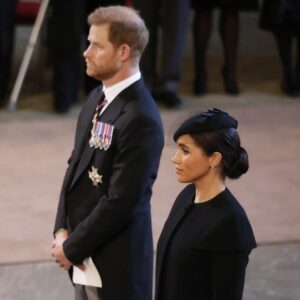“I still find it hard to believe it and I’m keeping my feet on the ground because my chance to participate in Tokyo was missed by a whisker,” Petrillo said. “I will only start thinking about the Paris Games once I arrive in France.”
According to The Guardian, Petrillo was diagnosed with Stargardt disease at the age of 14, leaving her visual abilities limited to 1/50th of the normal range.
Petrillo’s journey has been one of many twists and turns, and the athlete might well have already been familiar with Paralympic Games viewers had things played out differently.

As early as the approach of the 1996 Paralympic Games did the runner’s coaches believe she had a strong chance of qualifying to compete. Yet Petrillo opted not to take her shot because she didn’t feel comfortable doing so as a man.
In 2018, with her wife’s support, Petrillo confronted her gender dysphoria and began living as a woman. The following year she began hormone therapy, and experienced a subsequent decline in performance, losing approximately 11 seconds in the 400-meter race and 2.5 seconds in her specialty, the 200-meter race.
“Better to be a slow happy woman than a fast unhappy man,” Petrillo said.
In 2020, Petrillo began competing instead against women, and would eventually win bronze in the women’s 200m and 400m events at the World Para Athletics Championships in 2023.

Later that same year, World Athletics imposed a ban on transgender women competing in the female category at international events, declaring that no transgender athlete who had undergone male puberty would be allowed to participate in female world ranking competitions.
As stands, however, there remains no worldwide unified stance regarding transgender inclusion. The International Paralympic Committee, for example, allows international sport governing bodies to establish their own policies on the matter.
As a result, Petrillo is now set to make history as the first openly transgender athlete to compete at the Paralympic Games, having been chosen to represent Italy in Paris.
Needless to say, reaction has been split regarding Petrillo’s scheduled appearance at the Games. Certain people have celebrated her inclusion, while others naturally question where it’s fair that the sprinter will be competing against women.
Meanwhile, pictures of Petrillo before her transition have garnered their fair share of attention. Whereas now she sports short blonde hair, the 50-year-old once looked like this:
Speaking to BBC Sport, Andrew Parsons, president of the International Paralympic Committee, said that while Petrillo will be welcome in Paris under World Para Athletics policies, he wants to see the sporting world unite on its transgender policies.




